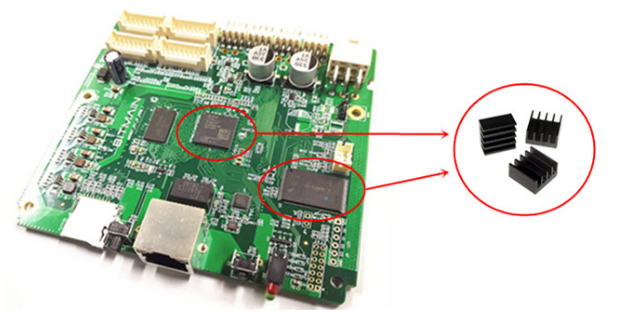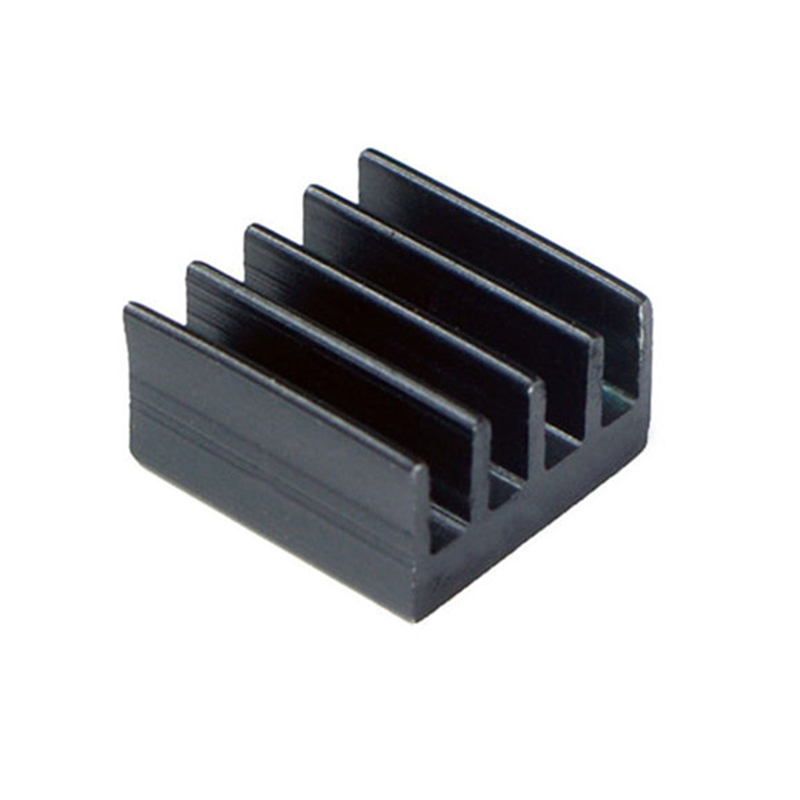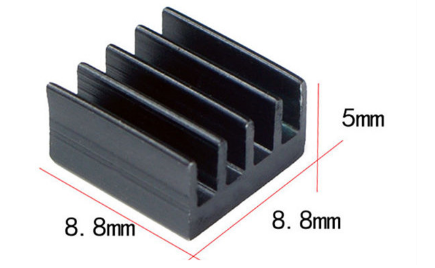How to ensure optimal thermal contact with ASIC miner heat sinks?
April 22, 2025
How to Ensure Optimal Thermal Contact with ASIC Miner Heat Sinks?
Cryptocurrency mining has evolved into a highly competitive and resource-intensive industry, where the efficiency and longevity of mining hardware are paramount. Among the critical components of any mining rig, ASIC miner control boards and their heat sinks play a vital role in ensuring stable and efficient operations. Heat management is not just about cooling; it’s about maintaining the delicate balance between performance and durability. This article delves into the importance of optimal thermal contact with ASIC miner heat sinks, focusing on the precision-engineered 8.8mm × 8.8mm × 5mm aluminum alloy heat sink, its advantages, and practical steps to maximize its effectiveness.
The Role of Heat Sinks in ASIC Mining
ASIC (Application-Specific Integrated Circuit) miners are designed for one purpose: to solve complex cryptographic algorithms as efficiently as possible. However, this intense computational activity generates significant heat, which, if not managed properly, can lead to thermal throttling, reduced hash rates, and even hardware failure. Heat sinks are the first line of defense against these issues, acting as passive cooling devices that dissipate heat away from critical components like CPUs and power management chips on the control board.
The challenge lies in ensuring that the heat sink maintains optimal thermal contact with the components it’s designed to cool. Poor thermal contact can create hotspots, reduce heat transfer efficiency, and ultimately compromise the mining operation. This is where the 8.8mm × 8.8mm × 5mm aluminum alloy heat sink comes into play, offering a precision-engineered solution tailored to the unique demands of ASIC mining.

Introducing the Precision-Engineered Heat Sink
The 8.8mm × 8.8mm × 5mm aluminum alloy heat sink is specifically designed for ASIC miner control boards, addressing the need for compact, efficient, and reliable thermal management. Its technical architecture and advanced features make it a standout choice for mining operators looking to optimize their rigs.

Technical Architecture
Crafted from high-grade aluminum alloy, this heat sink features a multi-piece construction that maximizes thermal dissipation efficiency. The design incorporates advanced thermal engineering principles to facilitate rapid heat transfer from critical components. Aluminum alloy was chosen for its excellent thermal conductivity, lightweight properties, and durability, making it ideal for continuous mining operations.
Thermal Interface Integration
One of the key features of this heat sink is its integration with a specialized thermal interface material (TIM). The TIM layer, typically a thermally conductive silica gel, ensures optimal thermal conductivity between the heat-generating components and the heat sink surface. This creates an efficient thermal pathway for heat dissipation, reducing the risk of hotspots and ensuring consistent performance.
Performance Characteristics
The compact form factor of 8.8mm × 8.8mm × 5mm is precisely calculated to provide optimal thermal management while maintaining a minimal spatial footprint. Weighing just 0.01 KG, this lightweight solution delivers exceptional thermal performance without adding significant mass to the control board assembly. Its design ensures that it fits seamlessly into various mining rig configurations, making it a versatile choice for different setups.
Advantages of the 8.8mm × 8.8mm × 5mm Heat Sink
Optimized Spatial Efficiency
In the crowded environment of a mining rig, space is at a premium. The compact dimensions of this heat sink allow it to fit comfortably within tight spaces without compromising on cooling performance. This balance between size and efficiency ensures that mining operators can maximize their rig’s capacity without overheating.
Advanced Thermal Management
The heat sink’s design delivers superior temperature control at critical device nodes, maintaining optimal operating conditions well within specified thermal limits. By preventing thermal throttling, it helps sustain high hash rates and extends the lifespan of ASIC components.
Enhanced Power Efficiency
Efficient heat dissipation reduces thermal-induced power losses, resulting in improved overall system efficiency. This translates to lower operating costs and more consistent power delivery to critical mining components.
Environmental Control Excellence
The multi-piece design of the heat sink facilitates strategic airflow management and efficient heat distribution. This creates an optimized microenvironment around critical components, further enhancing cooling performance.

Durability-Focused Design
Constructed from premium aluminum alloy, this heat sink is built to withstand the rigors of continuous mining operations. Its robust design maintains structural integrity even under high-temperature conditions, ensuring long-term reliability.
Thermal Interface Optimization
The heat sink is engineered to work seamlessly with thermal interface materials, maximizing heat transfer efficiency from components to the heat sink surface. This optimization ensures consistent thermal conductivity across the entire contact area.
Installation Versatility
Designed for compatibility with various control board configurations, this heat sink maintains optimal thermal contact across different mining hardware setups. Its versatility makes it a practical choice for both small-scale and large-scale mining operations.
Practical Steps to Ensure Optimal Thermal Contact
While the 8.8mm × 8.8mm × 5mm heat sink offers exceptional thermal performance, proper installation and maintenance are crucial to achieving optimal results. Here are some practical tips for ensuring optimal thermal contact:
- Surface Preparation: Before installing the heat sink, ensure that the surface of the control board component is clean and free of debris. Any contaminants can hinder thermal conductivity.
- Proper Application of Thermal Interface Material (TIM): Apply a thin, even layer of TIM to the component’s surface. Avoid using too much, as excess TIM can create an insulating layer rather than enhancing conductivity.
- Even Pressure During Installation: When attaching the heat sink, apply even pressure to ensure full contact with the component. Uneven pressure can lead to gaps that reduce thermal transfer efficiency.
- Regular Maintenance: Periodically check the heat sink and TIM for signs of wear or degradation. Over time, TIM can dry out or become less effective, requiring reapplication.
- Monitor Temperatures: Use monitoring tools to keep track of component temperatures. Consistent temperature spikes may indicate issues with thermal contact or heat sink performance.
Conclusion
In the demanding world of cryptocurrency mining, maintaining optimal thermal contact with ASIC miner heat sinks is essential for maximizing performance and hardware longevity. The 8.8mm × 8.8mm × 5mm aluminum alloy heat sink stands out as a precision-engineered solution that combines advanced thermal management, compact design, and durability. By following best practices for installation and maintenance, mining operators can ensure that their rigs operate at peak efficiency, delivering consistent results and protecting their valuable hardware investment.
Whether you’re managing a small-scale operation or a large mining farm, investing in high-quality heat sinks and optimizing their use is a step toward sustainable and profitable mining.